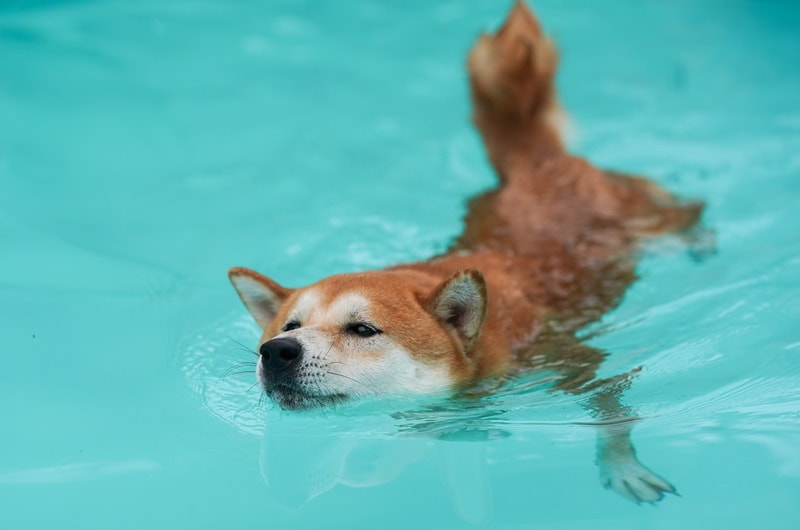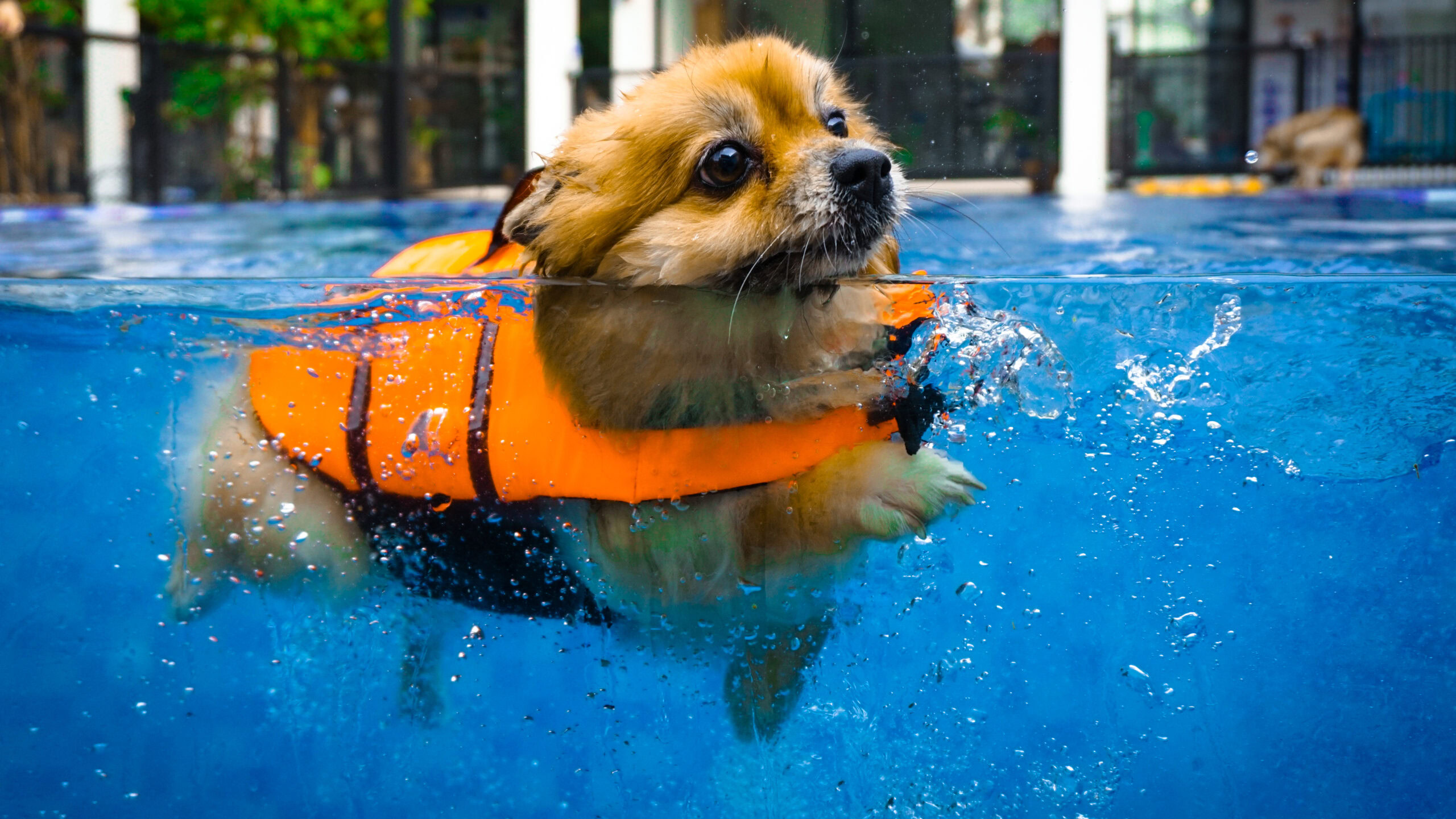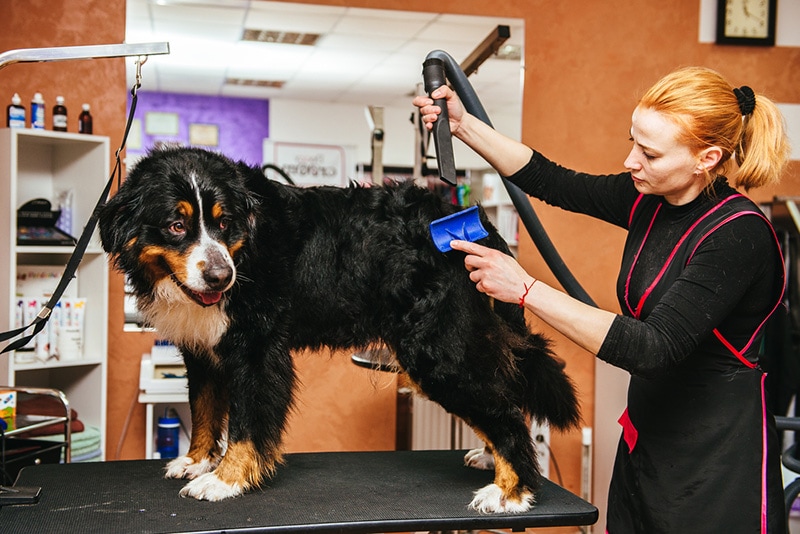Can All Dogs Swim Without Being Taught? Water Safety Facts

Updated on

Let’s face it, dogs are intelligent and have impressive skills that humans could never measure up to. These skills include a sense of smell that can be considered a superpower, enhanced hearing, and the ability to leap close to six feet up into the air. Dogs can also be taught to perform some incredible tricks, and some dogs are amazing swimmers, but can all dogs swim without being taught?
The answer is no. This is a mistake that many dog owners make, but some dogs are naturally better swimmers than others for various reasons. Some may battle to swim because of their build, and others can be taught to swim fairly easily. In this article, we’ll discuss what makes a dog a good swimmer, why you should teach your dog to swim, and how to keep your dog safe.
Do Dogs Naturally Know How to Swim?
Several dog owners believe that all dogs have the natural ability to swim. However, that can be a dangerous misconception. Some breeds were bred to be champions in water for specific tasks such as hunting and retrieving water prey. Many have webbed feet, water-resistant coats, and a physical structure made for skilled swimming. Other species were bred for other important tasks and may not have a suitable body for swimming or motivation.
Generally speaking, a dog’s natural ability to swim can be classified into three types: dogs that can swim, dogs that can swim but need assistance, and those that can’t swim or have a fear of swimming.

These dogs were generally bred to work in the water, either retrieving, hunting, or rescuing, and are typically good swimmers. Spaniels and Retrievers have long, strong hind legs, which are great for swimming. Some have webbed feet and water-resistant coats that make them strong swimmers.
Some dogs may inherently know how to swim, but that doesn’t mean they are safe or can swim independently. They also need assistance due to disabilities or age. Some of these breeds mentioned above may be included in this category and may need help for various reasons.
Small dogs like the Maltese or the Chihuahua may have the ability to swim but may be quickly overwhelmed by the vastness of the water and can quickly exhaust themselves and panic.
Some canines have short hind legs, short muzzles, boxy chests, and large, heavy bodies not designed for swimming. Any brachycephalic breed, such as Pugs, may have difficulty breathing and keeping their airways above the water, making them a drowning risk. Dogs with large bodies and barrel-shaped bodies may have trouble staying afloat. Breeds that generally can’t swim include the following:
Should I Teach My Dog to Swim

Most dogs, regardless of their breed, can learn to swim, which can provide exercise. If your dog shows interest in water, teaching them how to swim is a great idea. With a little patience and training, you can have a dog swimming and loving it in no time.
- Provides exercise
- Allows you to bond with your pet
- Improves muscular strength
- Improves the cardiovascular and respiratory systems
- Provides low-impact exercise for senior dogs
- Rehabilitates dogs with injuries
- Can cool down dogs in hot temperatures
- Ensures your dog is safe around deep bodies of water
If your dog is not a natural swimmer, you can get them accustomed to water by safely introducing them to swimming. Every dog is different, so some may take longer than others, and some may be more eager than others, so patience is critical. It is also essential for you to understand your dog’s capabilities so you can set realistic expectations.
How to Introduce Your Dog to Swimming
Learning to swim is all about courage, and if you force your dog from the beginning, they may have a negative experience with water, which will be hard to shake and make training much more difficult.

Purchase a Life Vest
Safety is also a top priority, and you can buy a life vest to keep your pet safe. A life vest will help keep your dog afloat and visible in water and help increase your dog’s confidence and courage. You should also be sure you have a life vest of your own because a large dog that panics may try to climb onto you, which will put you at risk. The best place to teach your dog to swim is in a pool with a gradual slope.
Use a Toy to Entice Your Pet
When you start to train your dog to swim, you will need to entice your dog into the water. You can do this by playing with your dog’s favorite toy and slowly bringing it to the water’s edge so you can encourage them to enter the water.
Enter the Pool With Your Dog
When your dog comes to the water’s edge, climb in with your dog while holding and supporting them with the handle of the life vest. This will allow your dog to paddle and will keep them feeling safe with their owner around. Stay in the shallow parts until your dog shows confidence; then, you can gradually move into deeper water, using praise or rewards every time they get in the water.
Invite a Strong Swimmer to Join
You can also plan a swimming date with a friend whose dog is a strong swimmer. Your dog can watch and learn and observe how much fun water can be, and they will likely want to do the same. Again, be sure your dog is wearing a life jacket.
Keeping Your Dog Safe in and Around Water
Whether your dog is learning to swim, is a confident swimmer, or is just happy being close to the water, there are several precautions you should take to keep them safe:
- Never take your eyes off your dog.
- Never force your dog to swim.
- Make sure your dog has a life jacket.
- Ensure your dog knows how to exit the water.
- Keep training sessions short to prevent exhaustion. Often our pets don’t know how exhausted they are.
- If it’s too cold for you, it’s too cold for your dog.
- Be cautious in rivers with currents and large objects such as logs.
- Make sure you always have fresh water for your dog to rehydrate.
- Always rinse your dog after swimming since salt and chlorine can irritate their skin.
- Don’t forget sun protection.
Conclusion
While some dogs are natural swimmers, not all dogs can swim without being taught, so it’s essential to understand your dog’s breed and history, size, and abilities. You can slowly introduce your dog to water at a young age, and when they are old enough, you can train them to swim. Always keep your dog safe in the water by closely monitoring them, providing a life jacket, and watching for signs of exhaustion. Training your dog to swim can provide a lot of benefits, and several breeds can become strong and confident swimmers.
- See Also: How to Teach a Dog to Swim: 5 Easy Steps
Featured Image Credit: Lucamino, Shutterstock












